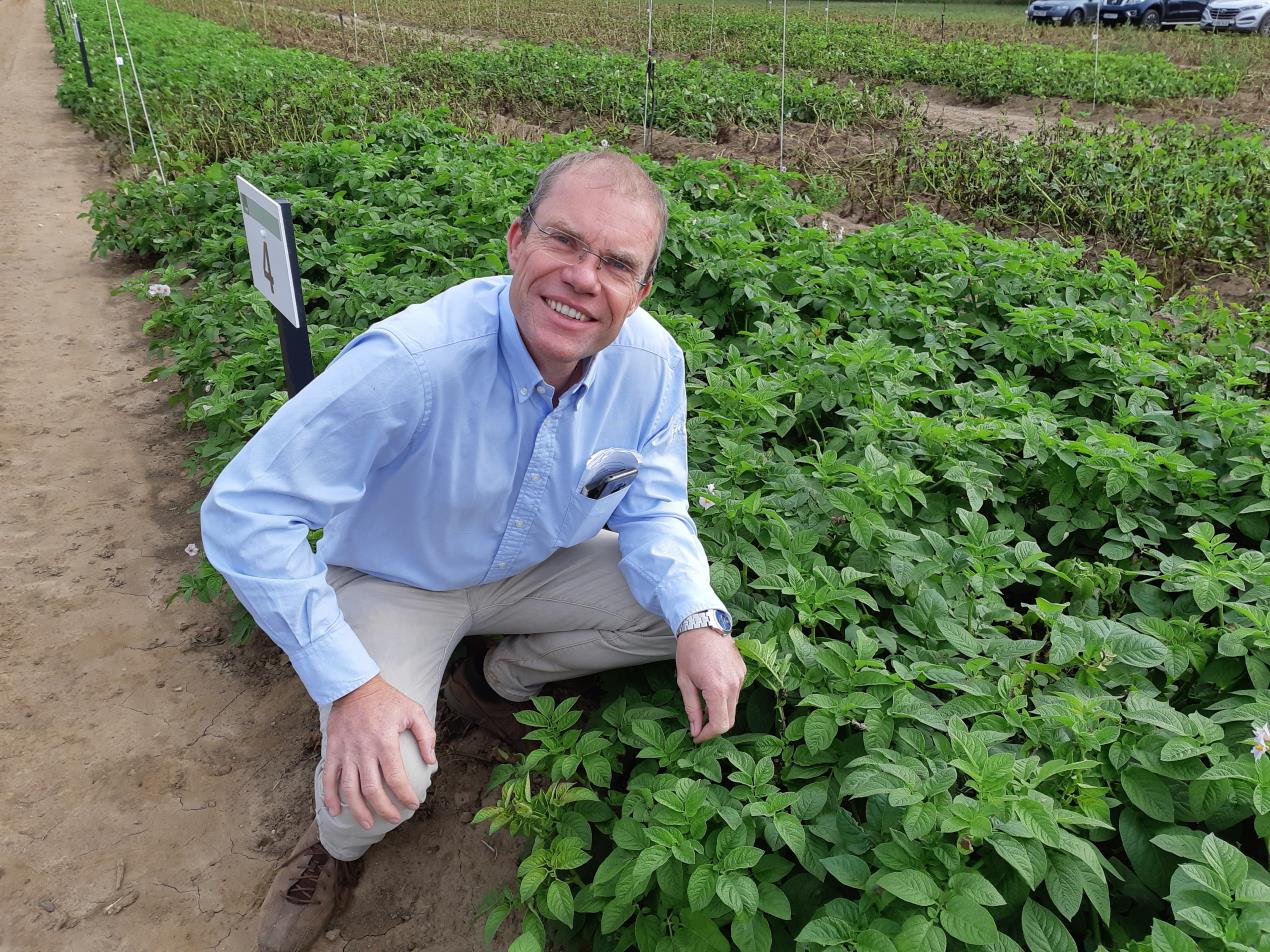Three years ago BASF launched a new SDHI Rhizoctonia solani treatment for potatoes based on the fungicide fluxapyroxad. Last year, with Hummingbird Technologies, BASF measured precise differences in emergence of the treated potato crop compared with azoxystrobin.
Paul Goddard, BASF potato specialist, contracted Hummingbird Technologies, a state-of-the-art remote sensing technology company, to measure crop emergence and the growth of potato crops in greater detail.
“Hummingbird Technologies are world leaders in data collection and image analytics, and are experts in this field. The company uses fixed wing and multirotor drones with the latest multispectral and hyperspectral sensors and for BASF they measured crop evenness plus canopy development in crops treated with ALLSTAR. We want to share the results of this technology, and the final assessments on skin finish, now before the season,” he says.
“Even crop emergence in potatoes means creating more leaf, more photosynthetic area and results in a higher potential yield. An even crop is also an easier crop to manage. It helps with applying herbicides, irrigation for common scab as well as burn-down strategies at the end of the season. For burn down the greater the range in plant size, the greater the range in maturity of the crop. Tuber size can also be affected as big plants will dwarf small ones resulting in smaller tubers. This can result in a greater proportion of tubers being too small and too large for the market, possibly not fulfilling contract needs,” says Paul.
“Hummingbird Technologies used high resolution aerial imagery to provide precise observations and to benchmark ALLSTAR against the standard in-furrow fungicide. Every 3 to 5 days following initial crop emergence, it provided plant counts, plant emergence and canopy data. It was exciting to use such amazing technology and even more so to see what it meant in terms of cash to the grower.” says Paul.
“Crop differences in warm moist easy springs can be difficult to see in the field, however expert you are in potato agronomy. Ever since we launched ALLSTAR the springs and planting conditions have been good and the benefits in emergence and growth difficult to see,” says Paul Goddard.
“But this work provided by Hummingbird technology proved that ALLSTAR treated plants emerged more evenly. ALLSTAR plant sizes are grouped much closer around the mid-point of the graph. The potatoes were quicker to emerge too, with fewer plants in the smallest size category.
In addition, the average plant size was larger in the ALLSTAR area. It had more plants in the largest size category and fewer in the smallest category in comparison with the azoxystrobin treated areas. Overall, azoxystrobin showed a wider variation than ALLSTAR,” he reports.
“But it is value which is important to the grower. Sample digs of potatoes showed that 95% of the tuber sizes in the ALLSTAR plots were of marketable yield, with a tight range of 93% to 98%. In the azoxystrobin plots 91% of the crop was of marketable yield, with a much wider range of 85% to 97%, ALLSTAR gives over 4% more marketable yield. Just think what that would mean across the whole crop.”
Applying this to an average 50 t/ha crop with a free buy price of £140/tonne minus the cost of the product, ALLSTAR treated crop delivered on average an additional £257/ha.
The trial demonstrated how ALLSTAR preserves skin finish too – a critical factor for anyone growing potatoes destined for the fresh pack market.
“Black dot, common scab, rhizoctonia and silver scurf was assessed across the samples with ALLSTAR showing fewer skin blemishes and lower levels of disease,” observed Paul.
“At one site the average clean area on a potato from the ALLSTAR treated plot was 92% in comparison with 58% with azoxystrobin. The average potato from all ALLSTAR samples was 94% disease and blemish free, whereas the average azoxystrobin sample only had 82% disease and blemish free.
Most crop effects in the field this year can be described as subtle, but the key driver on return is the % marketable yield which has been measured and valued accurately by this new technology.
ALLSTAR also has the benefit of an advanced ‘smooth-flow formulation’ which is kind to machinery and can be applied using any of the in-furrow applicators. There is no need to modify applicators to reduce nozzle blockages and equipment wear, nor is there a need to buy a specific applicator, so no need for additional investment.
-ENDS-
JCM Media Contact: Natalie Reed: natalie@janecraigie.com or 07843 681385

